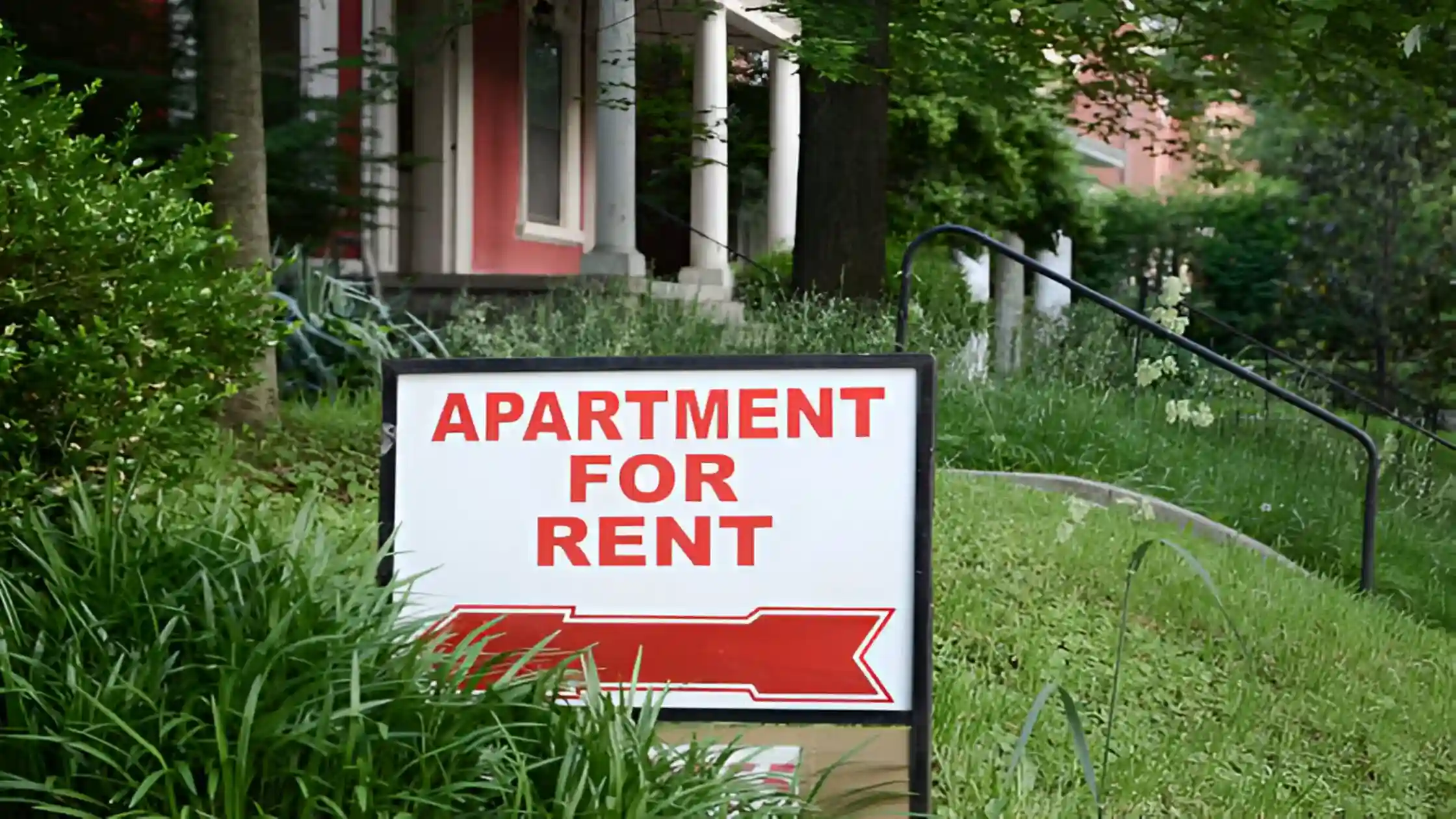Picking move-in fee vs security deposit matters for every landlord. If you charge a move-in fee, use it for cleaning the unit, changing locks, or updating keys. If you use a security deposit, that money helps repair broken windows or fix holes in walls when tenants leave.
Make sure you explain the difference between the move-in fee vs the security deposit in your lease. This helps tenants understand which part they will not get back (move-in fee) and which part they might see refunded (security deposit).
By listing move-in costs when renting clearly, you avoid arguments and build trust. Following state rules on how much is a deposit for an apartment is also key to rental success. Scroll down now!

Key Takeaway Table: Fast Facts for Landlords
What is a Move-In Fee?

Before we use the phrase move-in fee in opposition to security deposit, we must first understand both of these terms. The move-in fee is a frequent cost, however, that, as noted above, is commonly misunderstood by landlords and renters.
Definition and purpose
What is a move-in fee? Move-In Fee is a one-time or non-refundable fee landlord collects from a new tenant at the start of a lease. Unlike a security deposit, this fee is not held in trust for return.
The primary goal is to compensate the landlord for multiple administrative and turnover cost associated with preparing a unit for a new tenant. These are real costs associated with the logistical responsibility of tenant turnover. The fee helps recover these costs directly by putting money immediately back into the landlord's cash flow.
Typical costs covered by move-in fees
So what are these costs (or expenses)? The costs could run the range contingent upon the circumstances, but they generally represent essential services and administrative tasks required to prepare a unit between tenancies. This crucial distinction separates the move-in fee from a refundable security deposit.
Common costs include:
- Property Preparation & Cleaning: This often involves professional cleaning of the entire apartment, including carpets, and minor cosmetic work such as touching up paint on the walls, ensuring the unit is pristine for the next tenant.
- Security & Access Management: Costs associated with ensuring tenant safety and access, such as changing the locks or rekeying the unit, and setting up new keys, fobs, or access cards for secure entry.
- Administrative Processing: Fees covering the overhead for processing a new lease application, conducting necessary background checks (if not charged separately), and preparing all required legal and rental documents.
Understanding these typical expenses clarifies why landlords assess such fees. But how much are move-in fees for apartments? The amount is typically between 20% and 50% of one month's rent, though it can be a flat fee.
What is a Security Deposit?

The security deposit is a more traditional and widely understood component of move-in costs when renting. It serves a fundamentally different purpose than a move-in fee.
Definition and purpose
A security deposit is an amount of money the landlord holds at the beginning of a tenancy. A security deposit is intended to protect the landlord from incurring costs due to damage to the property (or damage resulting from non-payment, such as unpaid rent) during the lease.
For example, money from a security deposit can be used to cover a tenant's unpaid rent, offset the costs of extensive cleaning, or repair damage to the property that exceeds the normal wear and tear of rental use.
Understanding the regulations and possible uses of the deposit at the beginning of a tenancy minimizes confusion for both the landlord and tenant.
Between the two types of pre-lease fees, a security deposit is refundable to the tenant, provided the tenant is following the lease and leaves the rental unit in good condition. Meanwhile, the non-refundable move-in fee is final simply by being non-refundable.
Typical amount for a security deposit
How much is a deposit on an apartment? The standard security deposit on an apartment rental is one month's rent. However, your state's laws may influence this, as many states limit the amount a landlord can charge for a security deposit.
Note that a few states do not have caps on security deposits for rentals. For example, some limit it to one month's rent, while others may allow two months or even three months of rent.
Landlords might ask for a higher security deposit if the tenant has a bad credit rating or if they have pets, but this is only allowed if they have the right to do so.
For more detailed information, our guide on how much a security deposit is for an apartment provides a deeper dive.
Key Differences: Move-In Fee vs Security Deposit

Grasping the difference between a move-in fee and a security deposit is essential for every landlord aiming to stay compliant and successful. The policies you choose shape how you manage units, deal with renters, and resolve problems at move-out.
Let’s break down the critical differences between a move-in fee vs a security deposit—with clear, real-world examples and practical advice for landlords.
1. Refundability
The main difference between a move-in fee and a security deposit is whether the payments can be returned. A move-in fee is considered non-refundable, meaning that when the tenant pays this fee, and no matter how well they care for the home, they will not be able to obtain this payment back.
Let's say you have a move-in fee of $300. As soon as you receive that payment, you can spend it on ANY damages/action you like, like cleaning, painting, or changing the locks. When the tenant leaves the rental in great shape, it doesn't matter; you are keeping the non-refundable move-in fee.
The security deposit functions differently. A security deposit is fully refundable. If you take $1200 as a security deposit for an apartment, that money legally belongs to the tenant unless they damage the property or owe any unpaid rent.
Let's say at move-out, you find the tenant caused small holes in the wall using nails—if those holes are simply normal wear and tear, you return the entire security deposit. But perhaps the tenant broke a window or left a large stain on the carpet, which you must deduct from the security deposit. Most state laws require you to provide the tenant with an itemized list of these deductive amounts.
2. Purpose
These two costs serve different roles. The move-in fee covers your move-in costs when renting—such as costs to prepare paperwork, rekey the apartment, or clean it for the next resident. If a new tenant pays this up front, you have immediate funds for these tasks.
Contrast with this is the security deposit. Its purpose is protection, not upfront costs. It shields you against real lease breaches—like damage that goes beyond normal use or if the tenant skips the last month’s rent. This financial cushion can save you if tenants leave serious problems behind.
3. Regulation
One crucial difference between the move-in fee and the security deposit is how strictly each is regulated. The laws for what security deposits are for apartments are very clear and strict. For example, many states restrict the maximum typical security deposit for an apartment to one or two months’ rent.
Some require you to keep the deposit in a special bank account, pay interest on it, and return it to the tenant within a certain time after move-out—usually between 14 and 60 days. You must also provide an itemized statement for any deductions.
Move-in fees for apartments face far fewer legal rules. Most states do not limit how much move-in fees for apartments are or dictate where you keep the money. But some cities, such as Chicago, now set limits and may even restrict combining certain charges. Always check your local rules.
4. Holding Requirements
By law, landlords must usually keep the security deposit in a separate, interest-bearing account. Sometimes, you have to give tenants the account information or pay annual interest on the sum, as in Massachusetts or Illinois.
This does not apply to a move-in fee. You can put that money straight into your business account and spend it on move-in tasks. There’s no need to track interest, keep account records, or return the money down the line.
5. Typical Amount Limits
Most states cap the typical security deposit for apartment rentals at a certain amount—often equal to or less than two months’ rent. So, for a $1500 apartment, the maximum deposit is $1500 to $3000, depending on state law.
For move-in fees, limits are rare. You might charge $200, $350, or more, as long as the amount is “reasonable” for your local market and reflects actual move-in costs when renting. Charging too much, however, could lead to complaints or deter good renters.
6. Return Timeframe
A security deposit must be returned by a legal deadline—ranging from 14 to 60 days after move-out, depending on your state. For example, in California, you have 21 days to return the security deposit and an itemized list of costs withheld, if any.
There is no return timeframe for a move-in fee. Since this is a non-refundable charge, it does not get returned, regardless of the move-out condition.
7. Tenant Perception
Most renters expect to pay a standard security deposit for apartments and see it as their own money, refunded if they treat the property well. This encourages tenants to care for your unit and leave it in good condition.
A move-in fee, on the other hand, is often seen as a sunk, non-recoverable cost of moving. Tenants may grumble about it, especially if it’s high, but if the move-in fee is reasonable and well explained in the lease, most will accept it. In highly competitive markets, lower upfront move-in costs when renting can help attract more applicants, but excessive fees might scare away quality renters.
Pros & Cons of Move-In Fees

Choosing a move-in fee has distinct advantages and disadvantages that landlords should weigh carefully.
Pros:
- Immediate Cash Flow: The fee is non-refundable and available for immediate use for turnover expenses.
- Less Administrative Headaches: There is no need to hold money in a separate account, compute interest, or follow the formal process to document any deductions.
- Lower Risk for Disputes: A non-refundable fee removes any arguments over the deductions at the end of the lease
- Lower Up-Front Cost for Applicants: Usually, a move-in fee is less than the full security deposit, making the property more attractive for tenants who may have limited cash for move-in costs when renting.
Cons:
- No Protection from Major Damage: The fee is for administrative costs, and typically not large enough to address property damage or several months of unpaid rent.
- May discourage some applicants: Some tenants are leery of non-refundable fees, and would prefer a refundable deposit.
- Potential for Legal Scrutiny: Even though less regulated, some jurisdictions (like Chicago) have rules governing move-in fees. Landlords must ensure they are “reasonable."
Pros & Cons of Security Deposits
The traditional security deposit remains popular for good reason, but it comes with its own set of challenges. This is a core part of the move-in fee vs security deposit consideration.
Pros:
- Increased Financial Protection: A one to two months' rent Deposit is generally a considerable barrier to damages or a tenant who breaks a lease.
- Motivator of Good Actions: Use of the tenant's own money encourages them to treat the property better and pay their rent promptly.
- Defined Legal Boundaries: The comprehensive rules are cumbersome, but they include obvious rules to navigate the handling, deductions from it, and return of it.
Cons:
- Issues of Compliance: The rules have to be followed strictly. A mistake in handling the Deposit (such as not returning it by the deadline) could result in substantial damages, sometimes at three times its value.
- Administrative Hassle: The requirement to separate the funds into different accounts, tracking interest back and forth, and providing detailed and itemized letters showing deductions takes a lot of time.
- Increased Probability of Conflict: Disagreement about what constitutes “normal wear and tear" and “damage" is common and constantly legally challenged.
- Cash Flow: The money is not the landlord's bank account for their operational purposes; it has to be kept in a reserve for their tenant's sake and does not generate useful cash flow.
Can Landlords Charge Both Move-In Fees and Security Deposits?

Yes, in many jurisdictions, landlords can legally charge both a move-in fee vs a security deposit. This hybrid approach allows a landlord to use the non-refundable fee for immediate turnover costs while holding the refundable deposit for protection against future damages or unpaid rent. However, landlords must be strategic.
Combining a full security deposit with a large move-in fee can create a very high barrier to entry, potentially scaring away excellent applicants. The key is to be transparent and reasonable, clearly defining the purpose of each charge in the lease agreement.
When managing a property with roommates, it's crucial to have a clear policy on how these fees are handled, which is why understanding the dynamics of having multiple tenants on a lease is so important.
How Much Should Landlords Charge for Move-In Fees and Security Deposits?

Determining the right amount for a move-in fee vs a security deposit depends heavily on local laws and market conditions.
Legal overview by state
Laws regarding rental fees and deposits vary dramatically from one state to another, and even from city to city. Some states have no limit on security deposits, while others cap it at one or 1.5 times the monthly rent.
Similarly, while most states don't regulate move-in fees, some cities have ordinances that do. For instance, some cities may cap the move-in fee at a certain percentage of the rent.
At LeaseRunner, we always advise landlords to consult with a local attorney or their local landlord association to ensure full compliance with the specific regulations in their area before setting any fees.
Best practices for landlords
Beyond legal compliance, here are some best practices for setting your fees:
- Explore the Local Market: Explore what similar units are being rented for in your area. If the total up-front costs for renting and the unit you like are up to $500 different, it may be difficult to lease it.
- Be Upfront: Develop trust with potential tenants by being upfront about all fees, listing the fees, the extent of the fees, and what the fees apply to (i.e., refundable vs non-refundable) in your lease. If you disclose that to them upfront, there should be no disputes afterwards.
- Think Hybrid: A moderate non-refundable move-in fee for admin work, plus a reasonable refundable security (such as one month) can provide immediate cash flow for you, and long-term protection for your security.
- Keep Amounts Reasonable: Even if not legally capped, an exorbitant move-in fee can be perceived as predatory and may be challenged. Keep it aligned with your actual turnover costs.
This also applies to other fees, where the distinction between a pet fee vs a pet deposit follows similar principles of non-refundable vs. refundable charges.
Conclusion
Your decision on a move-in fee versus a security deposit should be the best option available for your rental and within the law. A move-in fee gives you a quick cash influx that can be used for re-keying locks, cleaning appliances, or required repairs before the new tenants move in.
A standard security deposit for apartments can help if you need to accept repair costs for significant wall damage, broken windows, or skipped rent after the tenants move out. Moving fees are non-refundable, and security deposits should be refunded, provided your rental is in good condition.
To be sure you are safe, check how much a deposit for an apartment is in your state, always identify any move-in costs when renting in the lease, and give your tenants this information upfront to create a degree of trust and keep your business safe.
FAQs
Q1. Are non-refundable move-in fees considered a rental scam?
No, a non-refundable move-in fee is a legitimate charge used by many landlords and property managers to cover the real costs of preparing a unit for a new tenant. It is not a scam as long as it is clearly disclosed as non-refundable in the lease agreement and the amount is reasonable. Transparency is key to avoiding misunderstandings.
Q2. Why do landlords charge move-in fees?
Landlords charge a move-in fee to cover the administrative and logistical costs associated with tenant turnover. These expenses include things like advertising the vacancy, screening applicants, preparing lease documents, rekeying locks, and professional cleaning, which are not covered by a security deposit.







